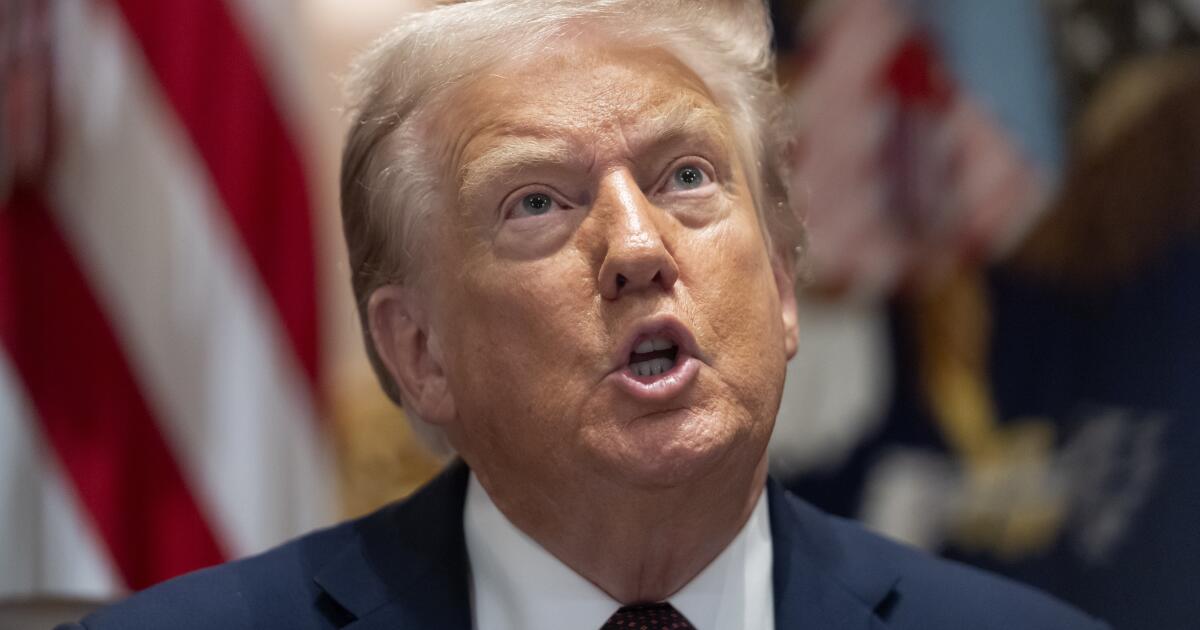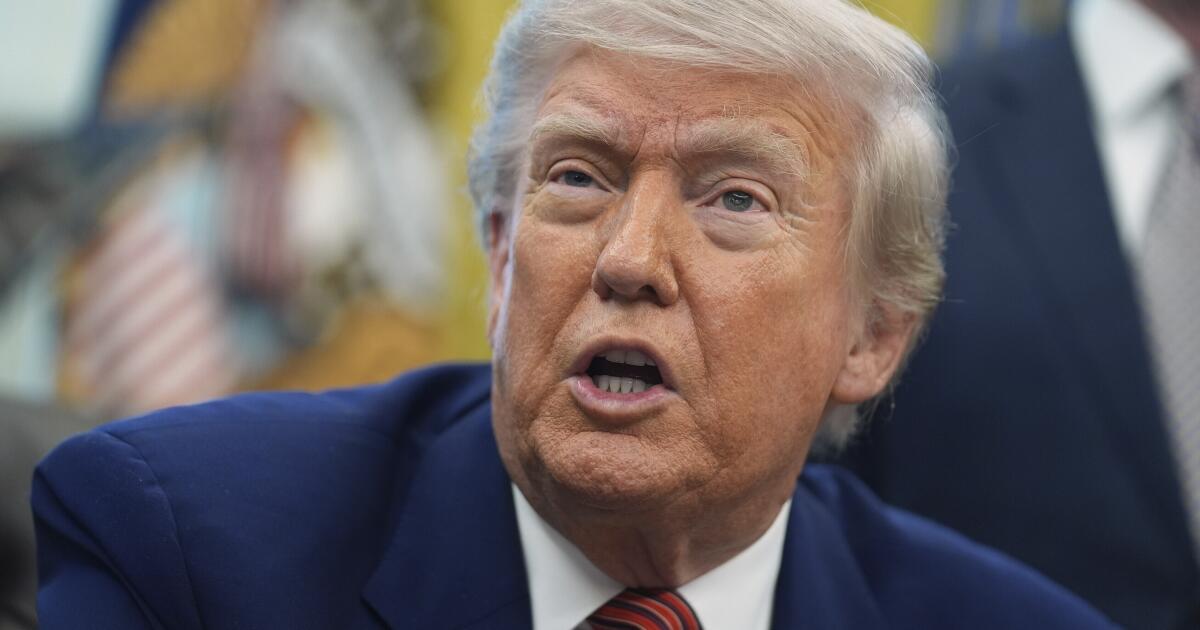What happens to Trump’s tariffs now that a federal appeals court has knocked them down?
WASHINGTON — President Trump has audaciously claimed virtually unlimited power to bypass Congress and impose sweeping taxes on foreign products.
Now a federal appeals court has thrown a roadblock in his path, ruling that he is violating the law.
The U.S. Court of Appeals for the Federal Circuit ruled Friday that Trump went too far when he declared national emergencies to justify imposing sweeping import taxes on almost every country.
The ruling largely upheld a May decision by a specialized federal trade court in New York. But the 7-4 appeals court decision tossed out a part of that ruling that would have overturned the tariffs immediately, allowing the Trump administration time to appeal to the U.S. Supreme Court.
The ruling was a big setback for Trump, whose trade policies have rocked financial markets, paralyzed businesses with uncertainty and raised fears of higher prices and slower economic growth.
Which tariffs did the court knock down?
The court’s decision centers on the tariffs — export taxes — Trump imposed in April on almost all U.S. trading partners and levies he imposed before that on China, Mexico and Canada.
Trump on April 2 — “Liberation Day,” he called it — imposed so-called reciprocal tariffs of up to 50% on countries with which the United States runs a trade deficit and 10% baseline tariffs on almost everybody else.
The president later suspended the reciprocal tariffs for 90 days to give countries time to negotiate trade agreements with the United States — and reduce their barriers to American exports. Some of them did — including the United Kingdom, Japan and the European Union — and agreed to lopsided deals with Trump to avoid even bigger tariffs.
Those that didn’t knuckle under — or otherwise incurred Trump’s wrath — got hit harder this month. Laos got rocked with a 40% tariff, for instance, and Algeria with a 30% levy. Trump also kept the baseline tariffs in place.
Claiming extraordinary power to act without congressional approval, Trump justified the taxes under the 1977 International Emergency Economic Powers Act, or IEEPA, by declaring the United States’ long-standing trade deficits “a national emergency.”
In February, he’d invoked the law to impose tariffs on Canada, Mexico and China, saying that the illegal flow of immigrants and drugs into the U.S. amounted to a national emergency and that the three countries needed to do more to stop it.
The U.S. Constitution gives Congress the power to set taxes, including tariffs. But lawmakers have gradually let presidents assume more power over tariffs — and Trump has made the most of it.
The court challenge does not cover other Trump tariffs, including levies on foreign steel, aluminum and autos that the president imposed after Commerce Department investigations concluded that those imports were threats to U.S. national security.
Nor does it include tariffs that Trump imposed on China in his first term — and President Biden kept — after a government investigation concluded that Beijing used unfair practices to give its technology firms an edge over rivals from the United States and other Western countries.
Why did the court rule against the president?
The administration had argued that courts had approved President Nixon’s emergency use of tariffs in the economic chaos that followed his decision to end a policy that linked the U.S. dollar to the price of gold. The Nixon administration successfully cited its authority under the 1917 Trading With the Enemy Act, which preceded and supplied some of the legal language used in the IEEPA.
In May, the U.S. Court of International Trade in New York rejected the argument, ruling that Trump’s April 2 tariffs “exceed any authority granted to the President’’ under the emergency powers law. In reaching its decision, the trade court combined two challenges — one by five businesses and one by 12 U.S. states — into a single case.
On Friday, the federal appeals court wrote in its 7-4 ruling that “it seems unlikely that Congress intended to … grant the President unlimited authority to impose tariffs.”
A dissent from the judges who disagreed with Friday’s ruling clears a possible legal path for Trump, concluding that the 1977 law allowing for emergency actions “is not an unconstitutional delegation of legislative authority under the Supreme Court’s decisions,” which have allowed Congress to grant some tariff authorities to the president.
So where does this leave Trump’s trade agenda?
The government has argued that if Trump’s tariffs are struck down, it might have to refund some of the import taxes that it’s collected, delivering a financial blow to the U.S. Treasury. Revenue from tariffs totaled $159 billion by July, more than double what it was at the same point the year before. Indeed, the Justice Department warned in a legal filing this month that revoking the tariffs could mean “financial ruin” for the United States.
It could also put Trump on shaky ground in trying to impose tariffs going forward.
“While existing trade deals may not automatically unravel, the administration could lose a pillar of its negotiating strategy, which may embolden foreign governments to resist future demands, delay implementation of prior commitments, or even seek to renegotiate terms,” Ashley Akers, senior counsel at the Holland & Knight law firm and a former Justice Department trial lawyer, said before the appeals court decision.
The president promptly said he would appeal the ruling to the Supreme Court. “If allowed to stand, this Decision would literally destroy the United States of America,” he wrote on his social media platform.
Trump does have alternative laws for imposing import taxes, but they would limit the speed and severity with which he could act.
For instance, in its decision in May, the trade court noted that Trump retains more limited power to impose tariffs to address trade deficits under another statute, the Trade Act of 1974. But that law restricts tariffs to 15% and to just 150 days on countries with which the United States runs big trade deficits.
The administration could also invoke levies under a different legal authority — Section 232 of the Trade Expansion Act of 1962 — as it did with tariffs on foreign steel, aluminum and autos. But that requires a Commerce Department investigation and cannot be imposed merely at the president’s own discretion.
Wiseman and Whitehurst write for the Associated Press.


